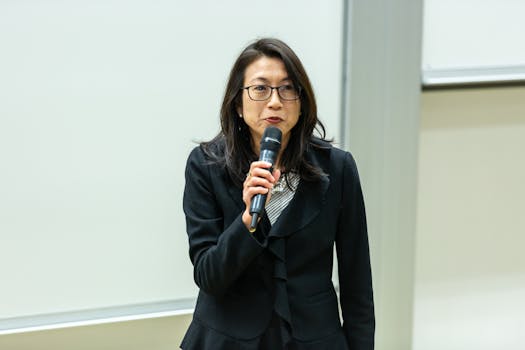
The future of air travel is set to be transformed by groundbreaking trends and technologies that promise to enhance passenger experiences, promote sustainability, and introduce new modes of urban mobility. From AI-driven customer service to electric aircraft, the aviation industry is on the cusp of a revolutionary change. This article delves into the key developments that will shape the future of air travel.
Key Takeaways
- AI and automation are revolutionizing passenger experiences, making travel more efficient and personalized.
- Sustainable aviation technologies, including electric aircraft and biofuels, are crucial for reducing the industry’s carbon footprint.
- Urban Air Mobility, featuring innovations like eVTOLs and air taxis, is set to change the landscape of city transportation.
Revolutionizing Passenger Experience with AI and Automation

AI-Powered Customer Service
AI is transforming customer service in the aviation industry. Airlines are deploying advanced chatbots and virtual assistants to handle passenger queries efficiently. These AI-driven tools provide instant responses, reducing wait times and enhancing overall satisfaction.
Automated Check-In and Boarding
Automation is streamlining the check-in and boarding process. Self-service kiosks and mobile apps allow passengers to check in, select seats, and receive boarding passes without human intervention. This not only speeds up the process but also minimizes physical contact, promoting a safer travel environment.
In-Flight Personalization
In-flight experiences are becoming more personalized thanks to AI. Airlines are using data analytics to offer tailored entertainment options, meal preferences, and even seating arrangements. This level of customization ensures a more enjoyable and comfortable journey for passengers.
The future of air travel is being reshaped by AI and automation, promising a seamless and personalized experience for every passenger.
Sustainable Aviation: The Path to Greener Skies
Sustainable aviation is paving the way for clearer skies by focusing on reducing greenhouse gas emissions, minimizing noise pollution, and conserving natural resources. This section explores the key trends and technologies driving this transformation.
Electric and Hybrid Aircraft
Electric and hybrid aircraft are at the forefront of sustainable aviation. These innovative planes aim to reduce the environmental impact of air travel by utilizing electric propulsion systems and hybrid engines. The shift towards electric and hybrid aircraft is not only about cutting emissions but also about enhancing energy efficiency and reducing operational costs.
Biofuels and Sustainable Aviation Fuel
Airlines are increasingly turning to biofuels and sustainable aviation fuel (SAF) to achieve net-zero carbon emissions. SAF can be produced from waste products or sustainable feedstocks, offering a greener alternative to traditional jet fuel. However, scaling SAF production to meet industry demands remains a significant challenge.
Carbon Offsetting Initiatives
Carbon offsetting initiatives are another crucial aspect of sustainable aviation. Airlines are investing in projects that offset their carbon emissions, such as reforestation and renewable energy projects. These initiatives help to balance out the carbon footprint of air travel, making it more sustainable in the long run.
The aviation industry is committed to a greener future, but achieving this goal requires innovative solutions and collaborative efforts across the sector.
The Rise of Urban Air Mobility
Urban Air Mobility (UAM) is a rapidly accelerating trend in 2024, with key players like Hyundai showcasing innovative eVTOL concepts. Airlines and airports worldwide are embracing UAM, with partnerships and collaborations driving momentum. UAM concepts will seamlessly integrate with multi-modal transportation hubs, connecting city centers to airports and high-speed rail networks. These advancements in UAM are reshaping urban mobility, offering efficient and shared transportation solutions for inter-city travel. The future of air travel is evolving to include UAM as a vital component, revolutionizing how people move within cities and regions.
Enhancing Security with Advanced Technologies
Biometric Authentication
Biometric authentication is revolutionizing airport security. Facial recognition and fingerprint scanning streamline passenger identification, reducing wait times and enhancing accuracy. This technology not only speeds up the process but also adds an extra layer of security, making it harder for unauthorized individuals to gain access.
Cybersecurity in Aviation
In aviation and airport security, advanced technologies are reshaping operational efficiency and passenger screening. The modern reliance on data makes airlines vulnerable to cyber threats like phishing and ransomware attacks. Investing in robust cybersecurity measures, including employee training and advanced software solutions, is crucial to safeguard sensitive information.
The speed of technological change cannot be untangled from cybersecurity threats. Autonomous vehicles, biometrics, and a growing online footprint all increase the potential surface area for a cyberattack.
Real-Time Threat Detection
Real-time threat detection systems are becoming essential in aviation security. These systems use AI and machine learning to monitor and analyze vast amounts of data, identifying potential threats before they escalate. This proactive approach ensures a safer environment for both passengers and staff.
Conclusion
As we look to the future of air travel, it is clear that the industry is on the cusp of a transformative era. Emerging technologies such as artificial intelligence, biometrics, and automation are set to revolutionize every aspect of the passenger journey, from pre-travel to post-travel. Sustainability and personalization will also play pivotal roles in shaping the future of aviation, ensuring that travel is not only more efficient but also more environmentally friendly and tailored to individual needs. The advancements we are witnessing today are just the beginning, and the next few decades promise to bring even more exciting innovations that will redefine the way we experience air travel. The sky is truly the limit.
Frequently Asked Questions
What are some emerging trends in air travel?
Emerging trends in air travel include the use of AI and automation to enhance passenger experience, sustainable aviation practices such as electric and hybrid aircraft, and the rise of urban air mobility with innovations like eVTOL and air taxis.
How is AI improving the passenger experience?
AI is revolutionizing the passenger experience by powering customer service chatbots, automating check-in and boarding processes, and providing in-flight personalization based on passenger preferences.
What are the advancements in sustainable aviation?
Advancements in sustainable aviation include the development of electric and hybrid aircraft, the use of biofuels and sustainable aviation fuels, and various carbon offsetting initiatives to reduce the environmental impact of air travel.






1 thought on “The Future of Air Travel: Emerging Trends and Technologies”
Comments are closed.